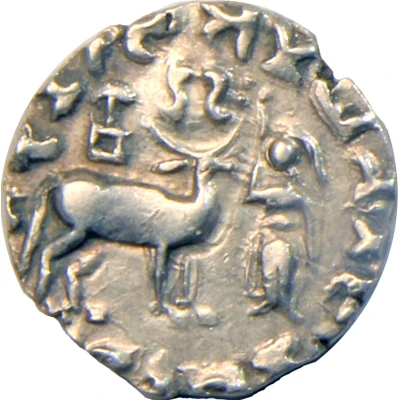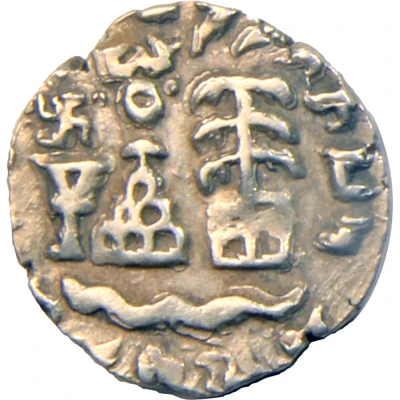


© Sujit
1 Drachm - Amoghabhuti 200 BC - 100 BC
| Silver | 2.46 g | 17 mm |
| Issuer | Kuninda Kingdom (Western Himalayas) |
|---|---|
| Type | Standard circulation coin |
| Years | 200 BC - 100 BC |
| Value | Drachm (1) |
| Currency | Drachm (200 BC to 100 BC) |
| Composition | Silver |
| Weight | 2.46 g |
| Diameter | 17 mm |
| Shape | Round (irregular) |
| Technique | Hammered |
| Demonetized | Yes |
| Updated | 2024-10-10 |
| Numista | N#61988 |
|---|---|
| Rarity index | 84% |
Reverse
Stupa (6-arched hill) with a crescent surmounted by the Buddhist 'triratna' symbol , and surrounded by a swastika and a "Y" symbol to the left, and a tree in railing to the right, wavy line representing flowing river below the stupa.
Legend in Kharoshti script, from righ to left
Lettering: Rajnah Kunindasya Amoghabhutisya maharajasya ("Great King Amoghabhuti, of the Kunindas")
Edge
Plain
Interesting fact
One interesting fact about the 1 Drachm - Amoghabhuti coin from the Kuninda Kingdom is that it features a unique blend of Greek and Indian artistic styles, reflecting the cultural exchange and influence of the time. The coin's design includes a depiction of the Greek goddess Athena on the obverse, while the reverse features a representation of the Hindu goddess Lakshmi, highlighting the fusion of artistic traditions in the region.